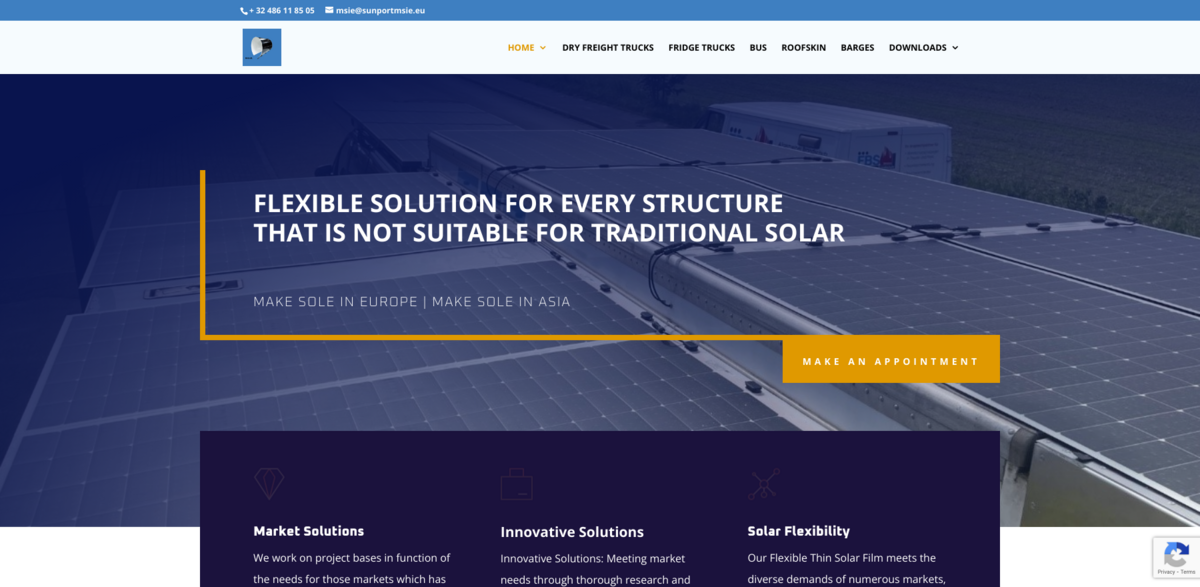What Is This Project All About?
Imagine a solar solution that fits where traditional panels just can’t—whether it’s rooftops too fragile to hold heavy modules, heritage buildings where aesthetics and laws block conventional setups, or even vehicles like trucks and barges aiming to cut down on CO2 emissions. This project is all about delivering flexible, innovative solar solutions tailored for those markets that have been overlooked by the solar industry for the past 25 years. It’s not about selling prices; it’s about offering complete concepts that bundle products and services like EPC, O & M, and financing into one seamless package.
Main Benefits of the Flexible Solar Solution
Here’s what makes this approach stand out:
- Rooftops unsuitable for standard solar panels due to weight or accessibility issues.
- Heritage buildings protected by laws that forbid conventional solar installations.
- Transportation assets—trucks, buses, vans, barges—that can offset CO2 emissions and energy costs with solar investment.
- Flexible Thin Solar Film technology that adapts to diverse market demands and applications.
- Comprehensive service offering including engineering, procurement, construction (EPC), operations & maintenance (O & M), and financing.
Innovative Solutions Tailored to Market Needs
This project thrives on deep research and product development to meet specific market challenges. It’s about pushing boundaries—finding ways to bring solar energy to places where it was once impossible. Whether it’s a flat roof sensitive to turbulence, a skyscraper, or a sports facility, the flexible thin solar film bends and adapts to the unique demands of each environment. It’s solar energy, but smarter and more versatile.
Who Is Behind This Initiative?
Based in Bulgaria and Singapore, this dynamic and young company is driven by global ambitions. Specializing in solar energy, it focuses on markets that have long been underserved. Their expertise lies in flexible thin solar film products and custom EPC services, tackling challenges like technical limitations, aesthetic requirements, and legal barriers head-on. The goal? To bring solar power to new, untapped markets worldwide.
Who Benefits From These Solutions?
The project targets specific groups that have struggled with traditional solar options:
- Fragile Roof Structures: Buildings with roofs too unstable to support conventional solar modules.
- Protected Heritage Structures: Heritage buildings where laws prohibit the installation of standard solar panels.
- High-CO2 Transportation: Floating and land transportation assets that contribute significantly to CO2 emissions and can benefit from solar energy to reduce their carbon footprint.
Project Impact on Sustainable Development Goals (SDGs)
- SDG 7: Affordable and Clean Energy – Expanding access to renewable energy in previously inaccessible markets.
- SDG 9: Industry, Innovation, and Infrastructure – Promoting innovative solar technologies and infrastructure solutions.
- SDG 11: Sustainable Cities and Communities – Supporting heritage and public buildings with sustainable energy options.
- SDG 13: Climate Action – Reducing CO2 emissions through solar-powered transportation and buildings.
- SDG 15: Life on Land – Protecting heritage sites by offering non-invasive solar solutions.
Why This Approach Changes the Solar Game
This project isn’t about competing on price—it’s about delivering real solutions that fit unique challenges. By focusing on flexibility and adaptability, it opens doors to markets that have been ignored for decades. It’s a fresh take on solar energy, one that’s as dynamic and forward-thinking as the industries it serves. The future of solar isn’t one-size-fits-all—it’s flexible, innovative, and ready to power the places others can’t.





















